Cleaning corroded aluminum can restore its shine and prolong its lifespan. Whether it’s kitchenware, outdoor furniture, or car parts, aluminum tends to corrode over time when exposed to moisture and air. This guide will walk you through the process of removing corrosion using simple, effective techniques and readily available materials.
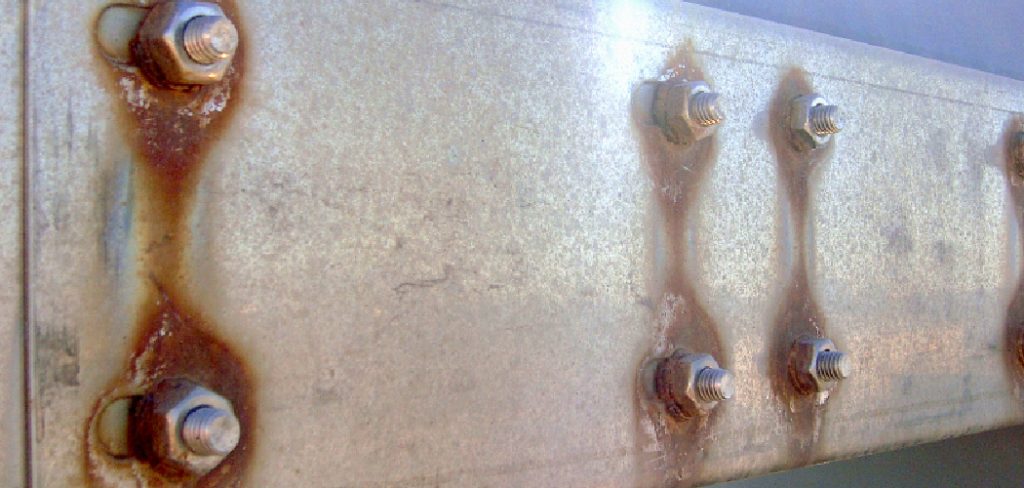
By following these steps on how to clean corroded aluminum, you can maintain the appearance and functionality of your aluminum items with ease. Before you begin, it’s important to understand the causes of aluminum corrosion and the best practices for handling this versatile metal.
Why Does Aluminum Corrode?
Aluminum is a reactive metal, meaning it readily reacts with other elements in its environment. When exposed to oxygen, aluminum forms a thin layer of oxide on its surface, which acts as a protective barrier against further corrosion. However, certain factors can compromise this layer and lead to corrosion, including:
- Exposure to salt water or corrosive chemicals
- Scratches or damage to the oxide layer
- Presence of dissimilar metals in contact with aluminum (known as galvanic corrosion)
- High humidity or acidic environments
Knowing these potential causes can help you take preventive measures to avoid corrosion in the first place. For example, storing aluminum items in a dry area and avoiding contact with harsh chemicals can help maintain their appearance and functionality.
Materials Needed
Before you begin the cleaning process, gather the following materials:
Mild Soap or Dish Detergent:
Choose a gentle soap or detergent to clean the aluminum without causing further damage.
White Vinegar:
Vinegar is a natural and effective cleaning agent, especially for removing rust and corrosion.
Baking Soda:
This household staple can also be used to remove stubborn corrosion on aluminum surfaces.
Soft Cloth or Sponge:
Avoid using abrasive materials that can scratch the surface of the aluminum. Instead, opt for a soft cloth or sponge to gently scrub away corrosion.
Toothbrush:
For smaller, hard-to-reach areas, a toothbrush can be useful in removing corrosion.
8 Step-by-step Guidelines on How to Clean Corroded Aluminum
Step 1: Prepare the Cleaning Solution
Start by preparing a simple and effective cleaning solution using the materials you’ve gathered. Mix equal parts of white vinegar and water in a container. This mixture will serve as the primary agent for loosening and removing aluminum corrosion. If you’re dealing with particularly stubborn or severe corrosion, you can increase the concentration of vinegar for a more potent solution.
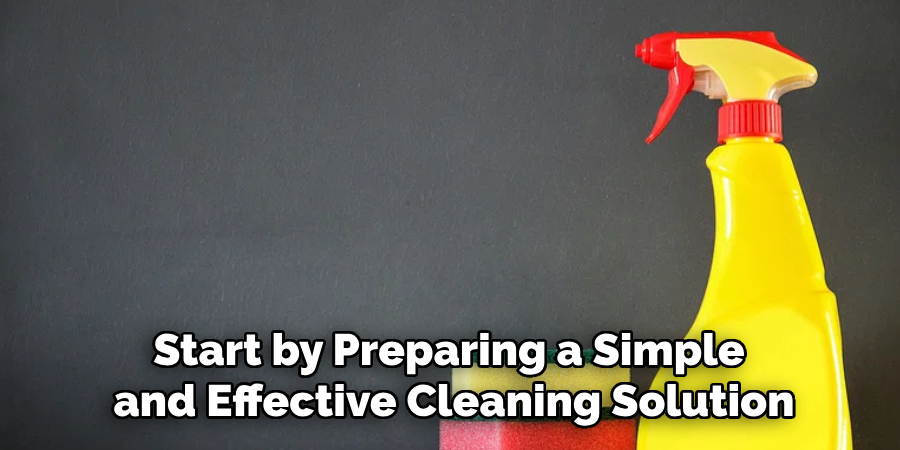
After mixing, ensure that the solution is evenly blended. This solution is gentle enough for regular use but powerful enough to tackle corrosion effectively.
Step 2: Apply the Cleaning Solution
Using a soft cloth or sponge, apply the cleaning solution to the corroded areas of the aluminum. Make sure to cover all affected areas thoroughly. Allow the solution to sit for at least five minutes to give it time to penetrate and loosen the corrosion.
But, if you’re dealing with severe corrosion, let the solution sit for a longer period before proceeding to the next step.
Step 3: Gently Scrub
Using a toothbrush or soft cloth, gently scrub the corroded areas. The vinegar solution should have loosened most of the corrosion, making it easy to remove. For tougher spots, you can sprinkle some baking soda onto the affected area and continue scrubbing.
Note: Avoid using steel wool or other abrasive materials as they can damage the aluminum surface.
Step 4: Rinse with Water
Once you have scrubbed the corroded areas thoroughly, it’s important to rinse off the cleaning solution completely. Use clean water to wash away any remaining vinegar, baking soda, and loosened corrosion. Ensure that all residues are removed, as leftover cleaning agents can cause further discoloration or damage over time.
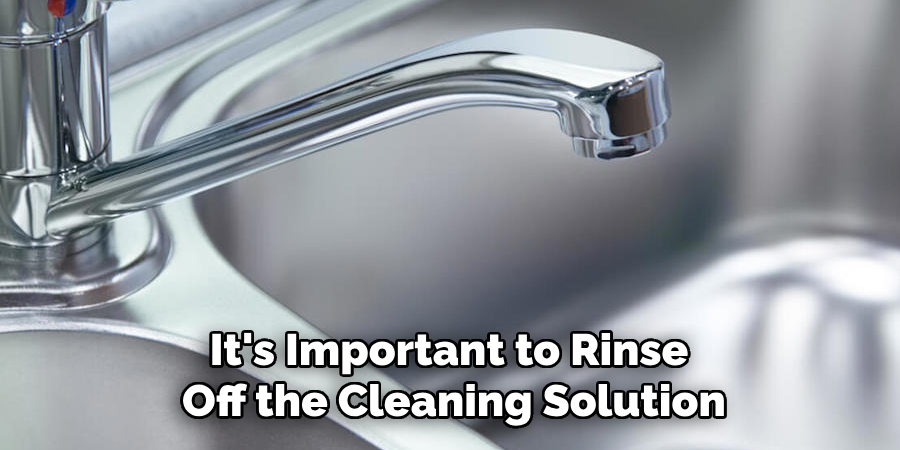
For larger items, you may consider using a hose or gentle spray nozzle for thorough rinsing. After rinsing, inspect the aluminum surface to confirm that all traces of corrosion have been eliminated. Dry the aluminum thoroughly with a soft cloth to prevent any water spots or additional oxidation.
Step 5: Repeat if Necessary
Examine the aluminum after drying it to determine if any corrosion remains. In some cases, particularly with heavily corroded items, a single cleaning might not be sufficient. If you still notice spots of corrosion, repeat the process by reapplying the vinegar solution, letting it sit, and scrubbing again. Ensure that you are thorough in each step to minimize the need for repetition.
Patience and persistence play a key role in achieving a clean and corrosion-free aluminum surface. Maintaining regular cleaning habits can also help prevent future corrosion buildup.
Step 6: Use a Rust Remover for Stubborn Corrosion
For particularly stubborn corrosion, you may need to use a specialized rust remover. These products can be found at most home improvement or hardware stores and are specifically designed to remove corrosion from metal surfaces. Follow the instructions on the product carefully, as some may require additional protective gear during application.
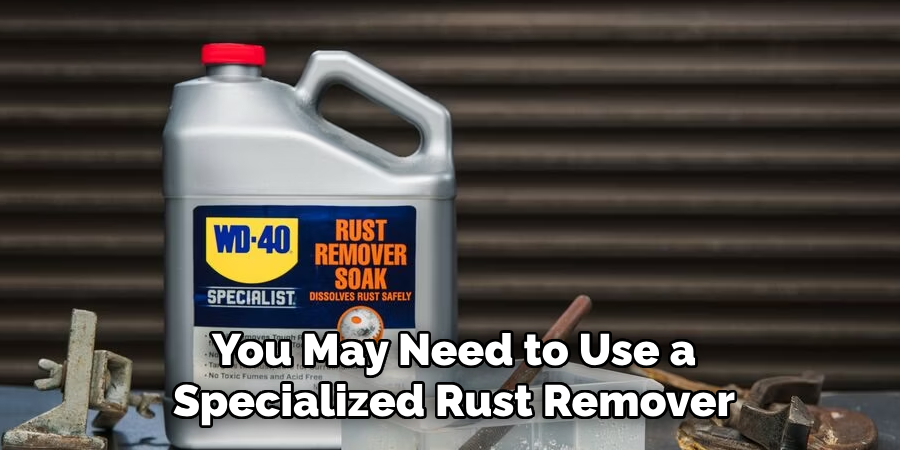
But, if you prefer a more natural method, you can create your own rust remover using lemon juice and salt. Apply the mixture to the corroded area, let it sit for a few hours, then scrub with a toothbrush or soft cloth.
Step 7: Polish the Aluminum
After removing all traces of corrosion, you can restore the shine and luster of your aluminum items by polishing them. Choose a suitable metal polish product and follow the instructions on its label. You can also use common household items such as olive oil or toothpaste as alternative polishes.
Apply the polish using a soft cloth in gentle circular motions until you achieve your desired shine. Make sure to remove any excess polish residue to prevent buildup and potential future corrosion.
Step 8: Apply Protective Coating
To prevent future corrosion, you can apply a protective coating on your aluminum items. This can be in the form of a clear lacquer or sealant designed for metal surfaces. Follow the instructions carefully and make sure to let the coating dry completely before using or storing your aluminum items.
Following these steps on how to clean corroded aluminum and maintaining regular cleaning habits can help keep your aluminum items looking clean and shiny, free from corrosion. Remember to always use gentle methods and avoid harsh chemicals to preserve the appearance and functionality of your aluminum items. So go ahead, grab those materials and start restoring the shine of your corroded aluminum!
Additional Tips
- Store aluminum items in a dry and cool place to prevent moisture buildup and corrosion.
- Avoid using aluminum items with acidic or corrosive substances, as they can lead to faster corrosion.
- Regularly inspect and clean your aluminum items to catch any signs of corrosion early on.
- Seek professional help if you’re dealing with highly valuable or delicate aluminum pieces that require specialized cleaning techniques.
- Consider using a protective coating on new aluminum items to prevent future corrosion. Overall, proper care and maintenance are key to keeping your aluminum items looking clean and shiny for years to come. Now, you can confidently tackle any corroded aluminum with this simple yet effective cleaning method. Happy cleaning!
Frequently Asked Questions
Q: Can I Use This Cleaning Method on All Types of Aluminum Items?
A: Yes, this method can be used on most non-anodized aluminum surfaces. However, it may not be suitable for anodized aluminum as the cleaning solution and scrubbing process can damage the surface. It’s best to check with the manufacturer or do a small test spot before proceeding with this method.
Q: Can I Use This Method on Painted Aluminum?
A: No, using vinegar or other acidic solutions on painted surfaces can strip off the paint. If your painted aluminum has corrosion, it’s best to seek professional help for proper cleaning and restoration.
Q: How Often Should I Clean My Aluminum Items?
A: The frequency of cleaning depends on how often the items are used and exposed to elements that can cause corrosion. It’s recommended that regularly used items be cleaned at least once every few months. However, for items that are rarely used or stored in a controlled environment, cleaning once a year should suffice.
Q: Can I Prevent Corrosion From Happening in the First Place?
A: While corrosion on aluminum is inevitable, proper care and regular maintenance can help prevent it from happening. Always make sure to dry off any moisture or acidic substances on aluminum items as soon as possible, and consider using a protective coating for added protection. Additionally, storing aluminum items in a dry and cool place can also help prevent corrosion.
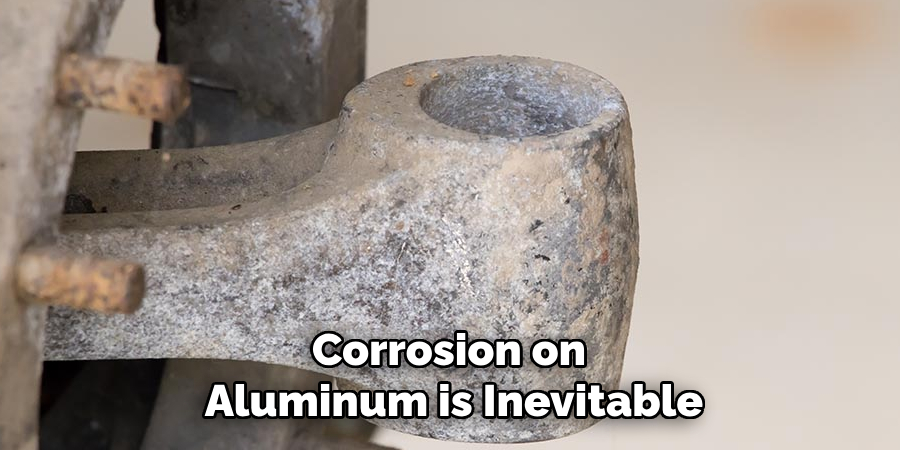
Conclusion
Cleaning corroded aluminum may seem like a daunting task, but with the right materials and techniques, it can be easily accomplished. Regular maintenance and proper care can also help prevent corrosion from occurring in the first place.
By following these step-by-step guidelines on how to clean corroded aluminum, you can ensure that your aluminum items remain clean, shiny, and free from corrosion. Remember to be patient and thorough in each step for the best results. Your aluminum items will thank you with their renewed shine! So go ahead, grab those materials and start restoring the shine of your corroded aluminum! Happy cleaning!
Edmund Sumlin is a skilled author for Metal Fixes, bringing 6 years of expertise in crafting a wide range of metal fixtures. With a strong background in metalwork, Edmund’s knowledge spans various types of fixtures, from decorative pieces to functional hardware, blending precision with creativity. His passion for metalworking and design has made him a trusted resource in the industry.
Professional Focus:
- Expert in Metal Fixtures : Edmund aesthetic specializes in creating durable and innovative metal fixtures, offering both appeal and functionality. His work reflects a deep understanding of metalworking techniques and materials.
- Sustainability Advocate : He is dedicated to using sustainable practices, ensuring that every fixture is crafted with eco-friendly methods while maintaining high-quality standards.
In his writing for Metal Fixes, Edmund provides valuable insights into the latest trends, techniques, and practical advice for those passionate about metal fixtures, whether they are professionals or DIY enthusiasts. His focus on combining artistry with engineering helps others discover the true potential of metal in design.


